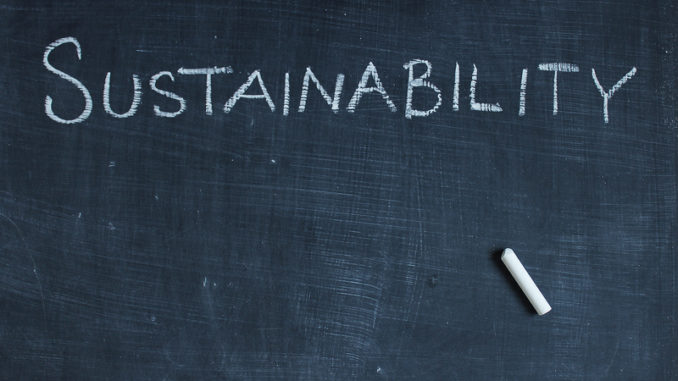
With ever growing interest in the topic of sustainability the IoT market research firm, Transforma Insights, recently published a study that quantified the impact of IoT technologies on key sustainability metrics. By 2030, according to their projections, potential savings are expected to be more than eight times the energy that IoT systems consume. There is also the scope to make reductions of one gigaton in CO2 emissions. In addition, water usage can be reduced by 230 billion cubic meters through the use of smart water grids and IoT-enabled agricultural applications.
The proliferation of IoT devices and sensors is fundamental to the new applications and services that enable sustainability. Their effectiveness, of course, relies on complementary technologies including mobile network connectivity, digital twins and applications of artificial intelligence and machine learning. While these are energy and resource consuming technologies, Transforma Insight’s analysis identifies net-positive sustainability benefits to justify their use.
How IoT Enables Sustainability
The United Nations’ Environment Program (UNEP) monitors progress on a range of metrics associated with each of the UN’s seventeen Sustainable Development Goals (SDGs). Almost half of these goals contain requirements that can be addressed through the use IoT technologies and systems.
• SDG2 Zero Hunger calls for the use of sustainable agricultural practices
• SDG 3 Good Health & Wellbeing calls for reductions in mortality linked to air and water pollution
• SDG 6 Clean Water & Sanitation calls for improvements in water quality and resource management
• SDG 7 Affordable & Clean Energy calls for a focus on energy efficiency
• SDG 9 Industry, Innovation & Infrastructure calls for reductions in CO2 emissions via circular economy and new production paradigms
• SDG 11 Sustainable Cities & Communities calls for improvements in public transport and disaster management
• SDG 12 Responsible Consumption & Production emphasizes the need to manage the environmental footprint of materials and influence over domestic consumption
• SDG 17 Partnerships for the Goals promotes the use of environmentally friendly technologies
While it is possible to customize strategies in each of these categories, it is important to recognize commonalities and the opportunity for reusable and scalable interventions using IoT capabilities. Four immediate opportunities stand out. The first involves the benefits of remote connectivity that bring widely dispersed machines and sensors into closer operational reach. The second, which is a consequence of the power of remote connectivity, is the availability and access to IoT data for the remote monitoring and improved decision making of scarce resources.
As multiple IoT systems are deployed, a third contribution of IoT is the ability to design cross-silo applications that encourage service innovation and new paradigms for eco-system collaboration. Finally, new monitoring requirements call for a significant expansion in the number of IoT sensors. These need to be energy friendly, making efficient use of connectivity networks without disrupting other users. This calls for new technologies based on constrained IoT devices combined with capabilities for intelligent connectivity and energy-saving dormancy modes of operation.
Additional Facets of Sustainability
Applications of IoT technologies in many use cases contain a sustainability element to them. There are two additional facets of sustainability in IoT systems. The first of these is to help developers build IoT systems based on sustainability principles. These include interoperability, scalability, modularity, and re-use principles.
Interoperability manifests itself in many ways. One such way is in making it possible for designers to interchange components from different suppliers and to exchange data across application and operational silos. These benefits tie into the principle of scalability and the potential to benefit from economies of scale from a large and dynamic supplier base.
Modularity in system and software design helps designers to combine sub-systems. As a design principle, it helps developers to build IoT systems that combine new capabilities with legacy systems. This preserves some value of deployed systems without foreshortening their useful service lives. This is also an aspect of the ‘re-use’ principle. The aim here is to create solutions and sub-systems that other developers can employ to save time and improve their productivity.
The second facet involves a more granular focus on sustainable technology components. In the past, for example, much discussion focused on efficient hardware designs to improve the energy performance and service life of constrained, IoT devices. In contrast to smartphones that are charged on an almost daily basis, some IoT devices are expected to survive in remote locations for as many as ten years. That calls for a new set of operational procedures and related technologies. One such example is a method for gathering and sending data without a device needing to be constantly switched on or continuously polling the network. This has a major impact on energy efficiency but requires an agreed handshake between device and network combined with software intelligence to optimize connectivity and data transmission.
A Standards Based Approach to Sustainability
oneM2M, the international standardization initiative that covers requirements, architecture, API specifications, security solutions and interoperability for Machine-to-Machine and IoT technologies recently launched an initiative to address the different facets of sustainability. This operates as an industry facing effort with participants that cross the boundaries of technology and sustainability policy disciplines. It aims to promote the beneficial impact of IoT systems, the importance of open-standard solutions and the significant role that the oneM2M standard has in improving the sustainability of IoT deployments.




